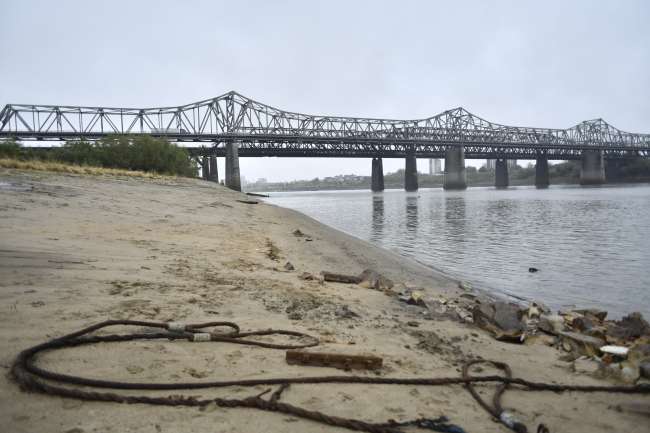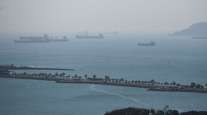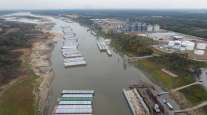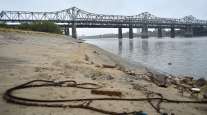Bloomberg News
Drought Shrivels Mississippi River, Threatening Food Exports

[Stay on top of transportation news: Get TTNews in your inbox.]
Drought across the central U.S. is shrinking the Mississippi River, sending barge rates soaring and threatening to roil shipments of everything from corn to gasoline.
Dry conditions across the Ohio River basin, which feeds the Mississippi, have worsened already low water levels at the larger river, said David Welch, a hydrologist with the Lower Mississippi River Forecast Center. The Mississippi, a critical conduit shuttling food, energy and steel supplies to global markets, usually sees lower levels at this time of year.
“It’s at low enough stages that the barge industry, and navigation industry, has to be sensitive how much draft, how much load, they can put on barges” to prevent vessels from running aground, Welch said.
Barge rates originating in an area between Minneapolis-St. Paul and St. Louis were $34.15 a ton for the week ended Aug. 27, a 19% jump from the previous week, according to the U.S. Department of Agriculture. Rates from St. Louis were $24.62 a ton, up 17% from a week earlier.
Low water on Mississippi River impacts barges, grain exports ahead of harvest. https://t.co/QFS4b1bdJo pic.twitter.com/AxRsN8RQKl — AGCanada.com (@AGCanadadotcom) September 4, 2024
The recent trend of lower water levels at the Mississippi is bad news for soy and grain producers in the U.S., according to Mike Steenhoek, the executive director of the Soy Transportation Coalition. Barge companies are already announcing limits on draft and how many vessels can be towed, he said.
While Mississippi River levels are still well above last year’s lows, the drought underscores how extreme weather is putting the world’s most vital waterways at risk. Over the past two years, dry conditions on the Mississippi have created traffic jams at the busiest times of the year to ship grain, forcing farmers to seek alternatives and putting upward pressure on already high global food prices. This year, low water levels on the Amazon in Brazil are also imperiling crop shipments there.
Along with recent railroad snags including a daylong Canada strike, “the retreating water levels on the Mississippi River are serving as an impediment to farmer profitability,” Steenhoek said. “This coincides with a projected large 2024 harvest.”
Shipments of crude oil and petroleum products like gasoline and diesel could also be affected, although crude transports via barges and tankers have dropped in the last decade as more pipelines are built. Last year, around 36,000 barrels of crude and petroleum products were transported between from the Midwest to the Gulf Coast. That’s significantly lower than the peak of 80,787 barrels in 2013.
Want more news? Listen to today's daily briefing above or go here for more info
The shriveled Mississippi imperils drinking water, too. When its levels are low, the river doesn’t have enough force to prevent salt water from the Gulf of Mexico from flowing upstream and contaminating supplies for towns in southeastern Louisiana. Last month, the Army Corps of Engineers said it would build an underwater sill, or barrier, to hold back salt water for a record third year in a row.
Welch said water levels will likely remain low or get worse because there is little rain in the forecast for the next few weeks.
Parts of West Virginia and Ohio along the Mississippi are in extreme drought, the U.S. Drought Monitor said. A larger area encompassing parts of Indiana, Pennsylvania and Kentucky is abnormally dry. And drought is hitting the states along the lower Mississippi as well.
“This is kind of a seasonal dry period,” Welch said. “We are not seeing much to turn it around.”




